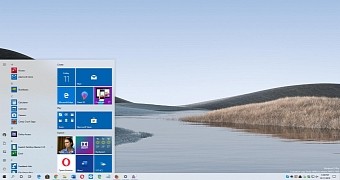Microsoft has recently announced that the next feature update for Windows 10 would be called November 2019 Update for a reason that makes total sense: this update is scheduled to launch in November, so what better way to call it than using the month when it was released?
Since July 2015 when it rolled out the first version of Windows 10, Microsoft has tried on several occasions to pick names for its feature updates that made more sense going forward, while at the same time to make it easier for users to set these releases apart.
Microsoft has until now refused to adopt Apple’s approach and use names that have very little in common with what the OS updates bring new to the table, and instead tried to go for names that either represented the idea that the new release was based on or the date when the launch actually took place.
One problem, however, is that Microsoft jumped from one naming approach to another, so until now, it used both the concepts mentioned above. Here are the Windows 10 feature updates that Microsoft released so far:
| Windows 10 original version (10240) Windows 10 November Update (version 1511) Windows 10 Anniversary Update (version 1607) Windows 10 Creators Update (version 1703) Windows 10 Fall Creators Update (version 1709) Windows 10 April 2018 Update (version 1803) Windows 10 October 2018 Update (version 1809) Windows 10 May 2019 Update (version 1903) Windows 10 November 2019 Update (version 1909) |
At first glance, the approach that Microsoft is using right now makes more sense than picking names that don’t mean anything, simply because it’s easier to tell when an update was released by simply reading its name.
At the same time, the version number that the company uses for each release is also an indicator of the month and year when an update was finalized. The first two digits in each version number represent the year when it was signed off, while the other two stand for the month – for instance, Windows 10 May 2019 Update, which is version 1903, was finalized in the third month of 2019.
But despite this more straightforward system, some people still think it’d be better for Microsoft to use fancier names, pretty much like Apple does. And it’s all because the current approach with months and years do not mean anything for the Average Joe in the first place, as most consumers aren’t interested in the release date of Windows 10 feature updates at all.
At some level, this makes sense, especially because figuring out which update is which is also possible by checking out the version number, so a catchier name might actually be a better way to go for consumers and customers who aren’t necessarily interested in determining the launch date of an update.
As far as the November 2019 Update is concerned, Microsoft is yet to provide us with an ETA as to when it could launch, but the company says the final build is already available for testing for users enrolled in the Release Preview ring of the Windows Insider program. In other words, we’re probably only a few weeks away from the moment the rollout starts for the first wave of devices across the world.

 14 DAY TRIAL //
14 DAY TRIAL //